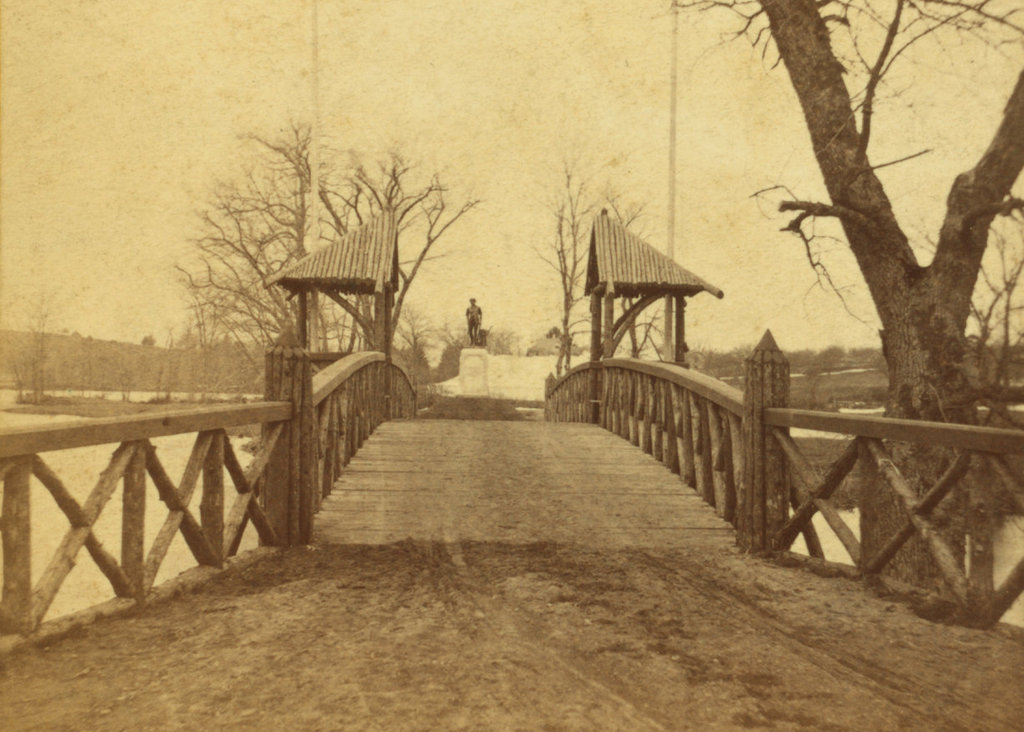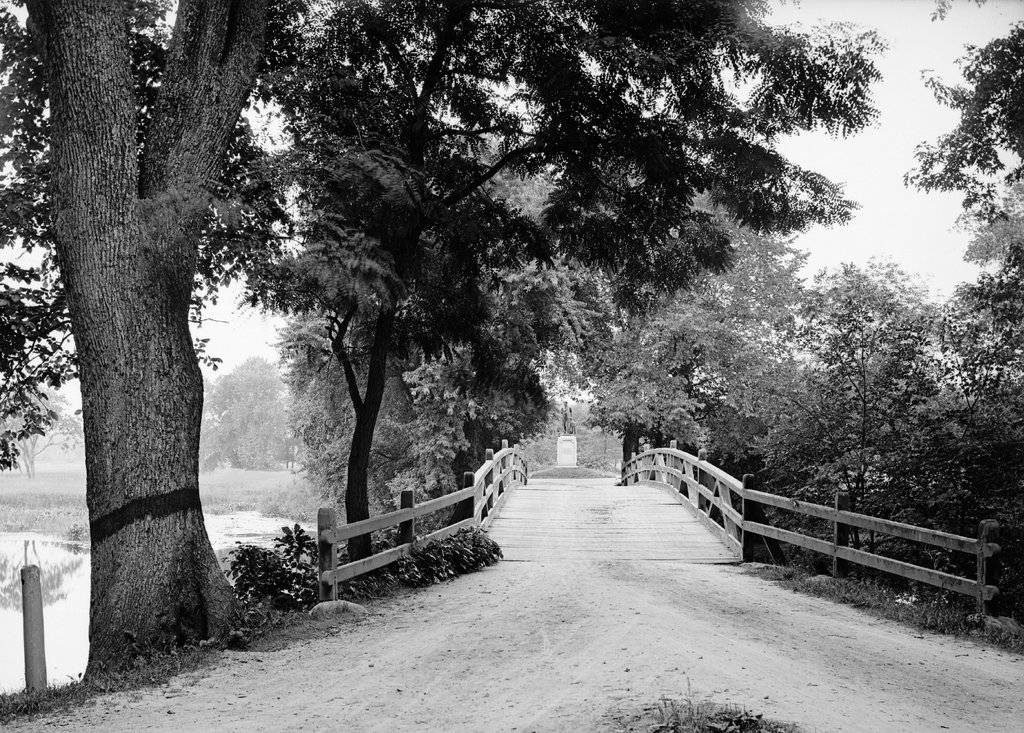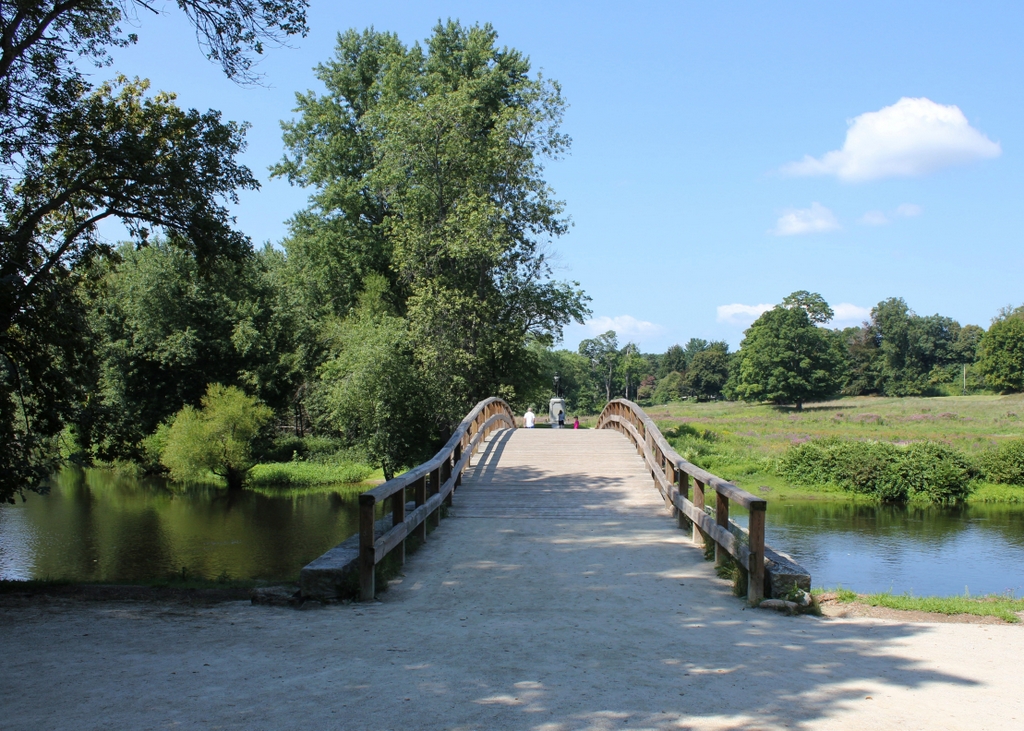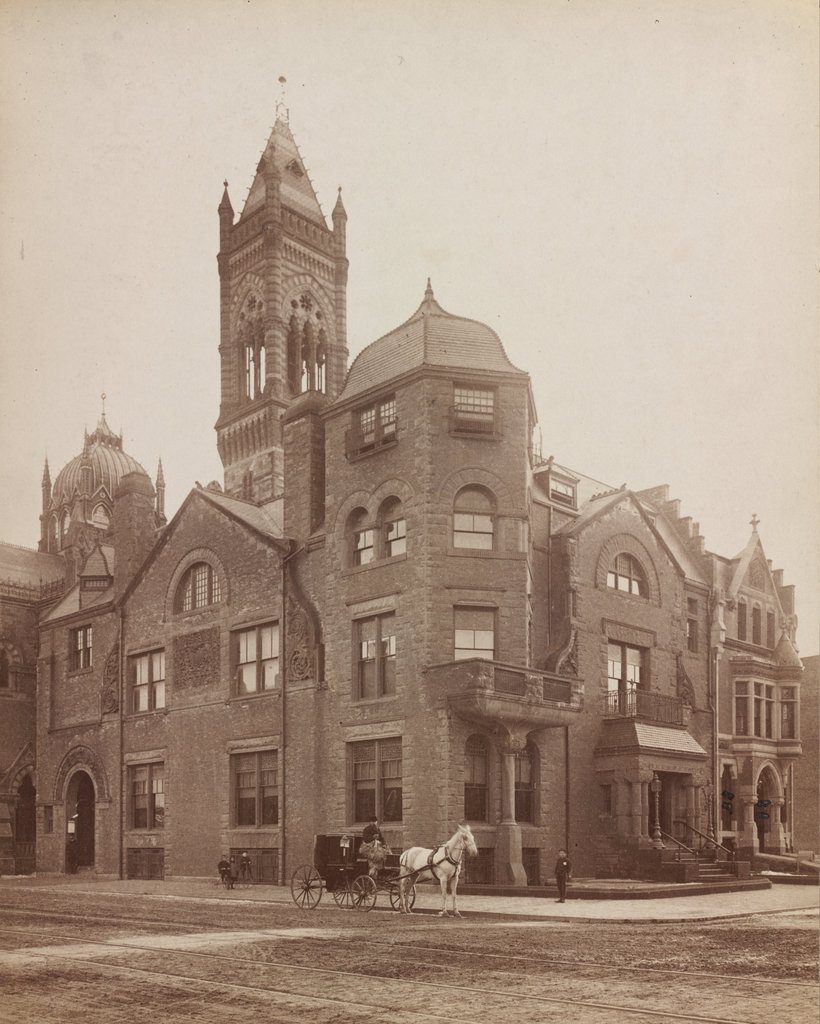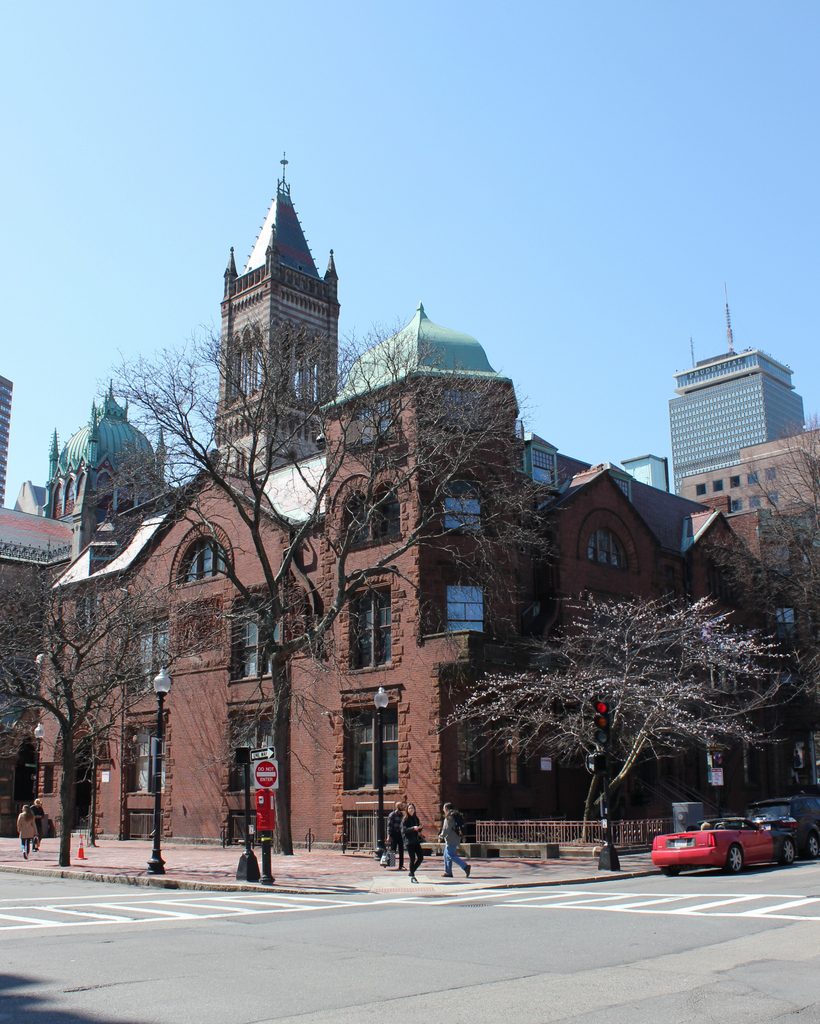Looking west across the Old North Bridge over the Concord River in Concord, around 1875-1885. Image courtesy of the New York Public Library.
The scene around 1900-1909. Image courtesy of the Library of Congress, Detroit Publishing Company Collection.
The scene in 2018:
As discussed in more detail in an earlier post, the Old North Bridge over the Concord River was the site of the Battle of Concord at the beginning of the American Revolution. It occurred on April 19, 1775, only a few hours after the opening shots of the war in nearby Lexington, and it was the first American victory of the war, resulting in the British abandoning their search for colonial munitions and returning to Boston.
Because of its historical significance, the battlefield is now marked with two monuments. On the east side of the river, directly behind the spot where this photo was taken, is a granite obelisk dedicated in 1837, and on the west side of the bridge is the statue The Minute Man, visible in the distance of all three photos. This statue was the work of prominent sculptor Daniel Chester French, and it was dedicated on the 100th anniversary of the battle on April 19, 1775, in a ceremony that included dignitaries such as President Ulysses S. Grant.
Aside from the monuments, the most significant landmark here on the battlefield is the bridge. The original one was removed in 1788, and from 1793 to 1875 there was no bridge on this site after the roads were rerouted. However, as part of the centennial celebrations of 1875, a new one was built around the same time that the statue was installed. This bridge, shown here in the first photo, bore no resemblance to the original one. It was designed by noted architect William R. Emerson, and it featured a rustic Victorian-style design, with cedar logs for railings and two half-arbors at the middle of the bridge.
The centennial bridge was ultimately destroyed in a storm in 1888, and it was replaced by a simpler yet sturdier wooden bridge, as shown in the second photo. It was similar to, although not identical to, the original bridge here at this spot, and it stood here until it too was destroyed in 1909. Its replacement, built later in 1909, lasted until 1955, when it sustained serious damage in a flood. The current bridge was completed the following year, and it was designed to be a replica of the original colonial-era bridge.
In 1975, this bridge became a focal point for the bicentennial celebrations here in Concord. As was the case a century earlier, the event included a visit from the president, with Gerald Ford speaking from a platform here at the eastern end of the bridge, which was located just out of view on the right side of the scene. Since then, very little has changed here. The battlefield has been well-maintained in its 1775 appearance, and today the site probably looks more like it did on the day of the battle than in either of the two earlier photos. Much of this is due to the efforts of the National Park Service, which has administered the battlefield since 1959, when the bridge and the surrounding area became a part of the Minute Man National Historical Park.

